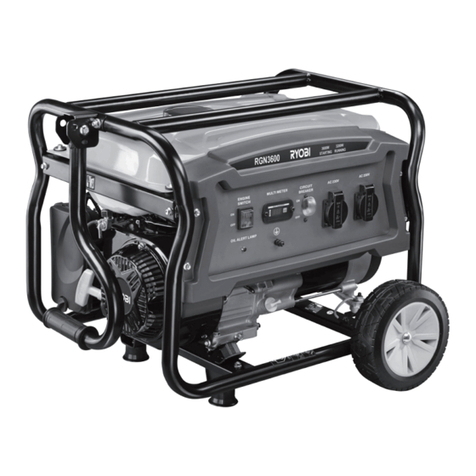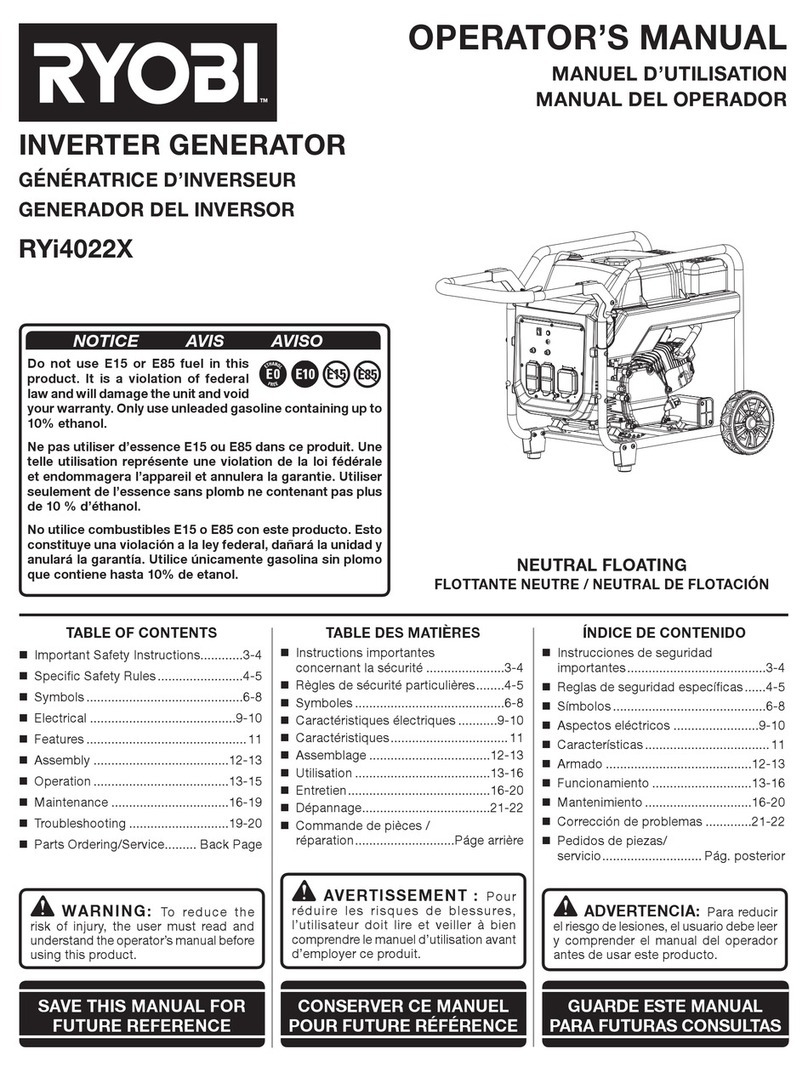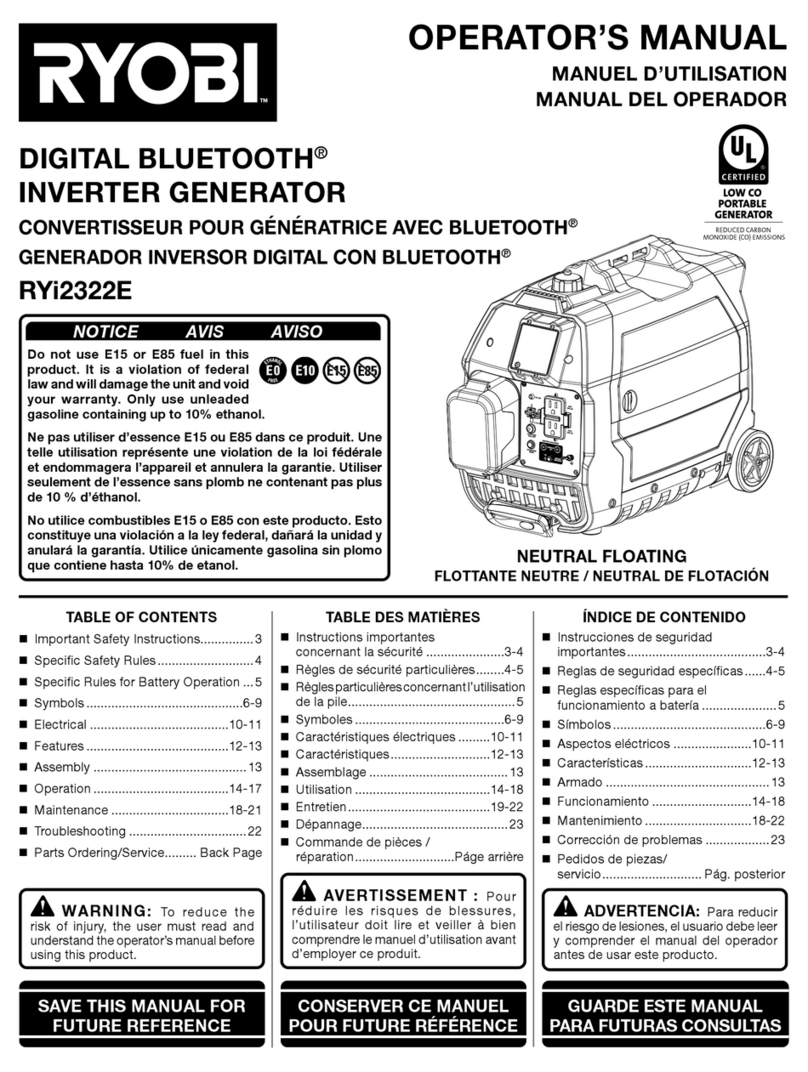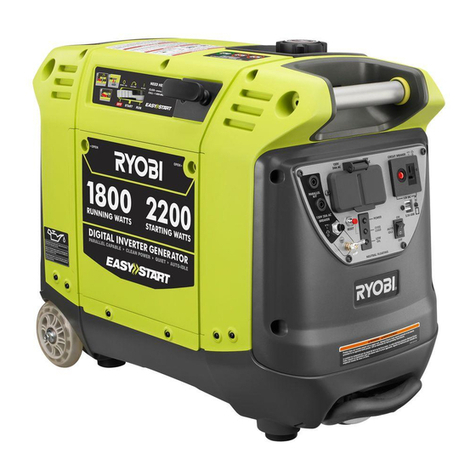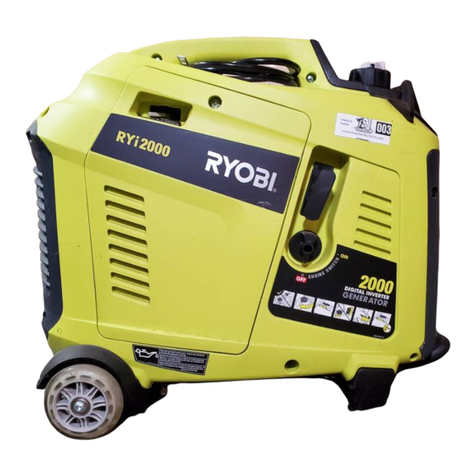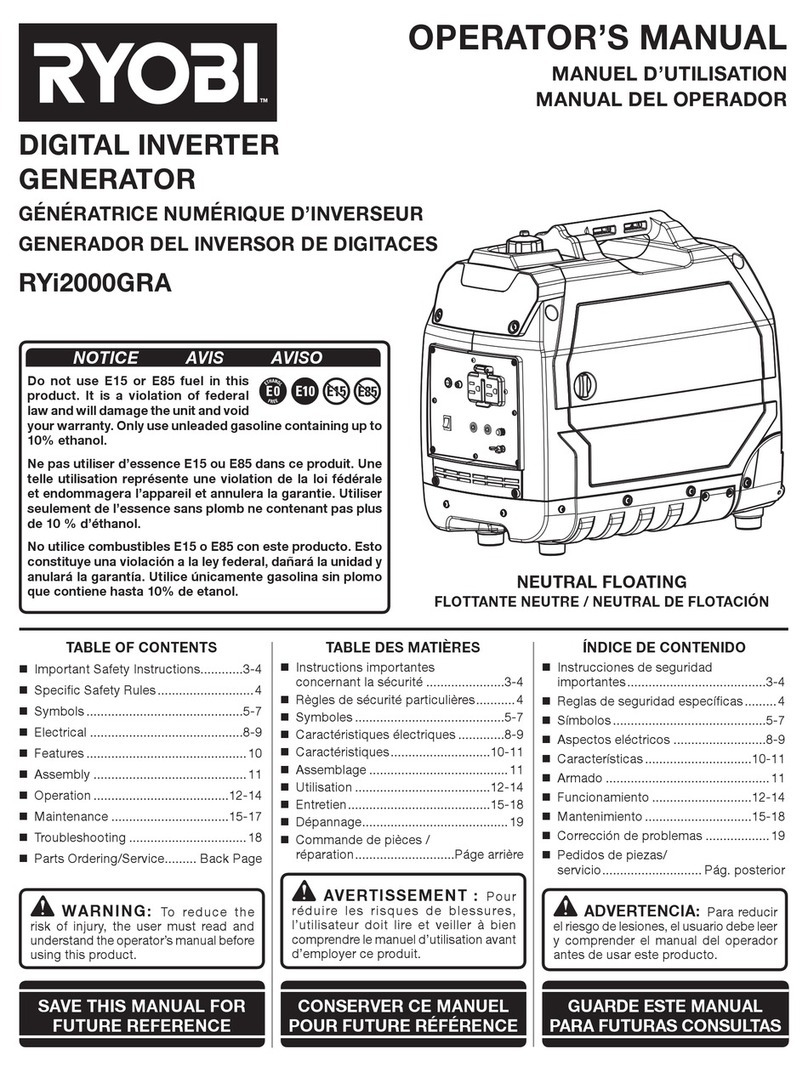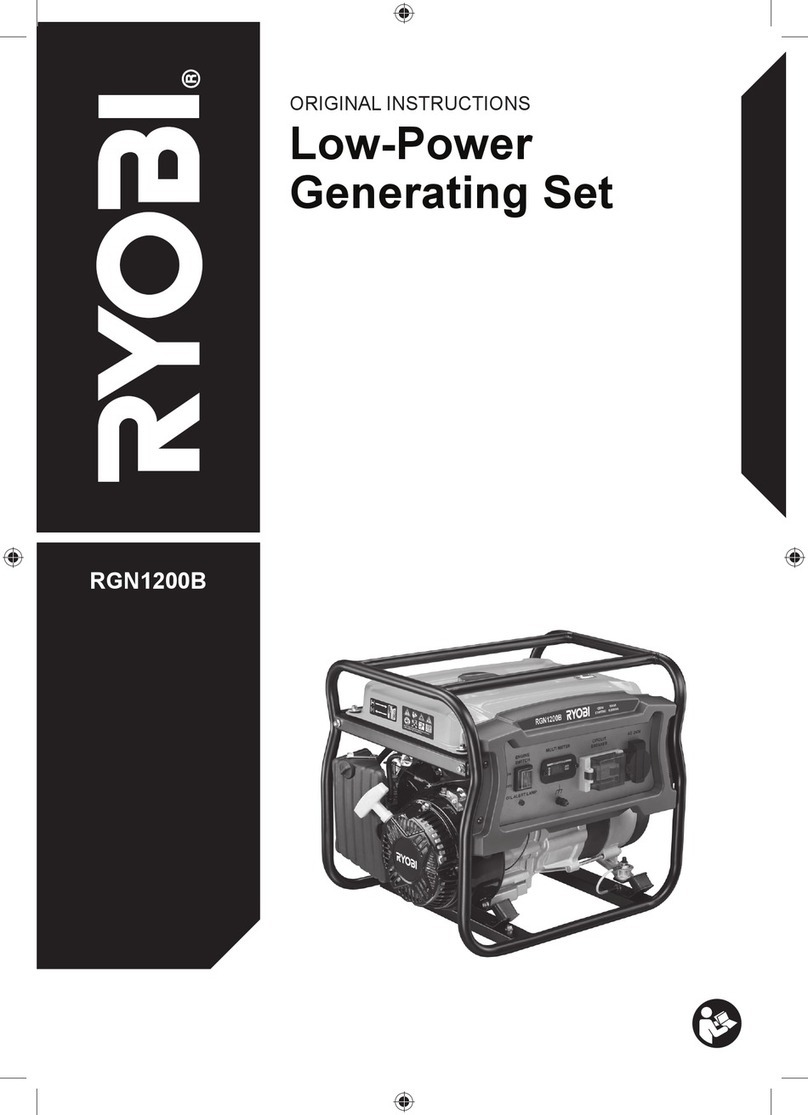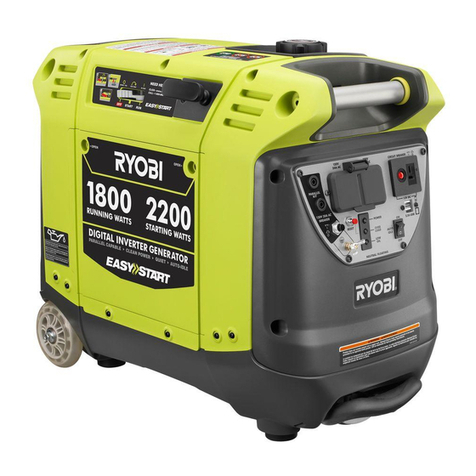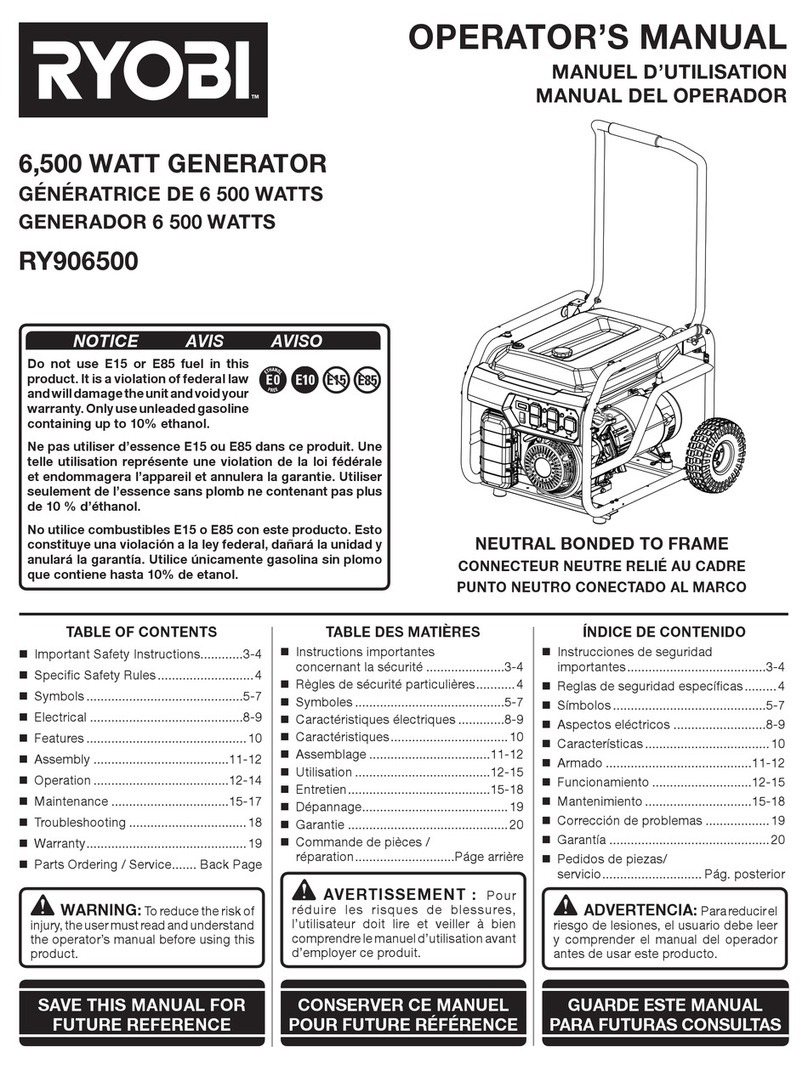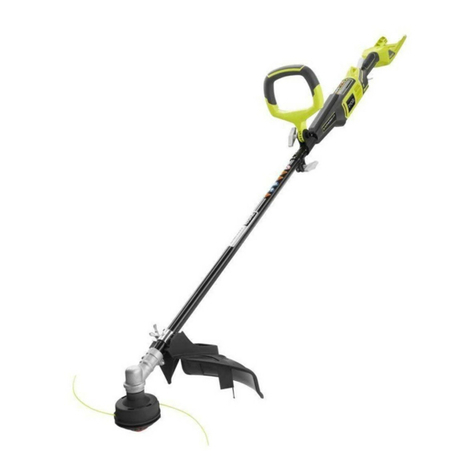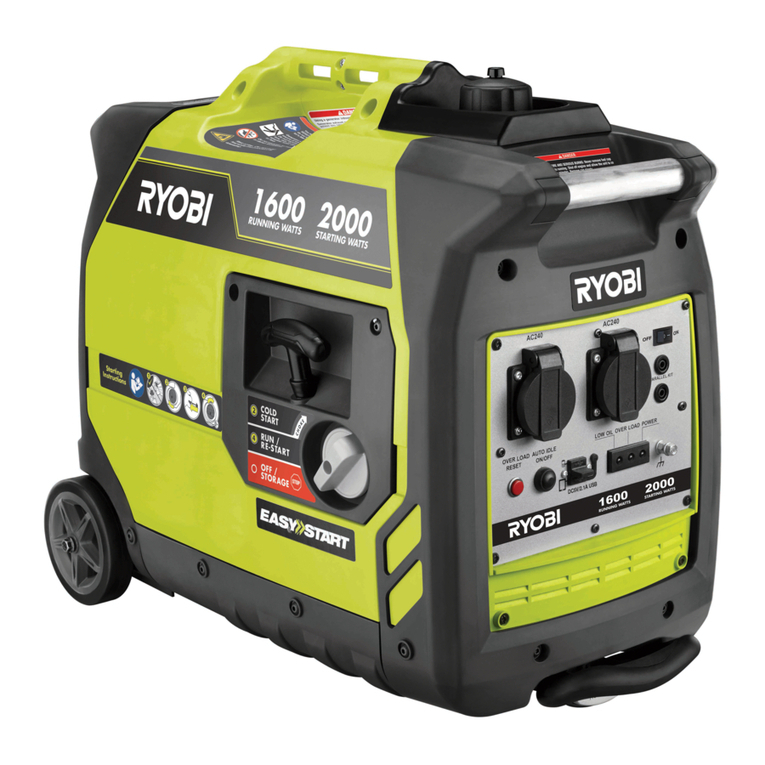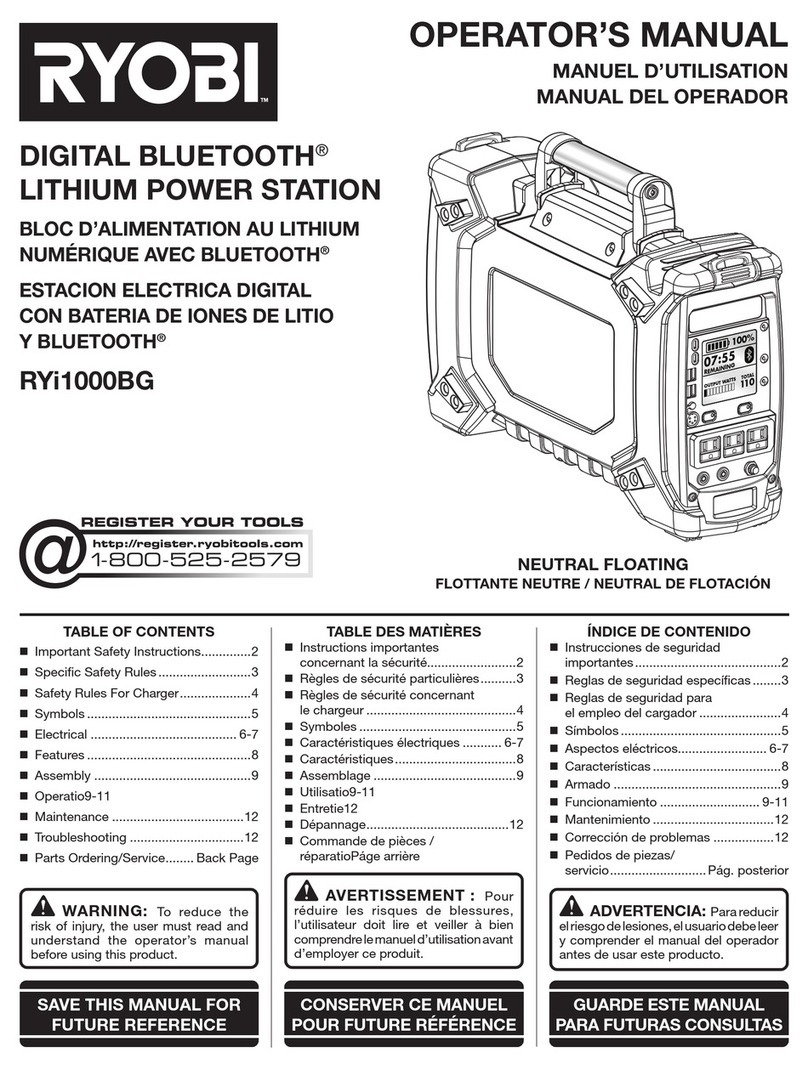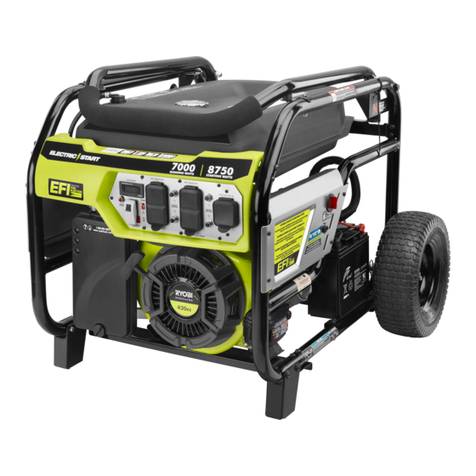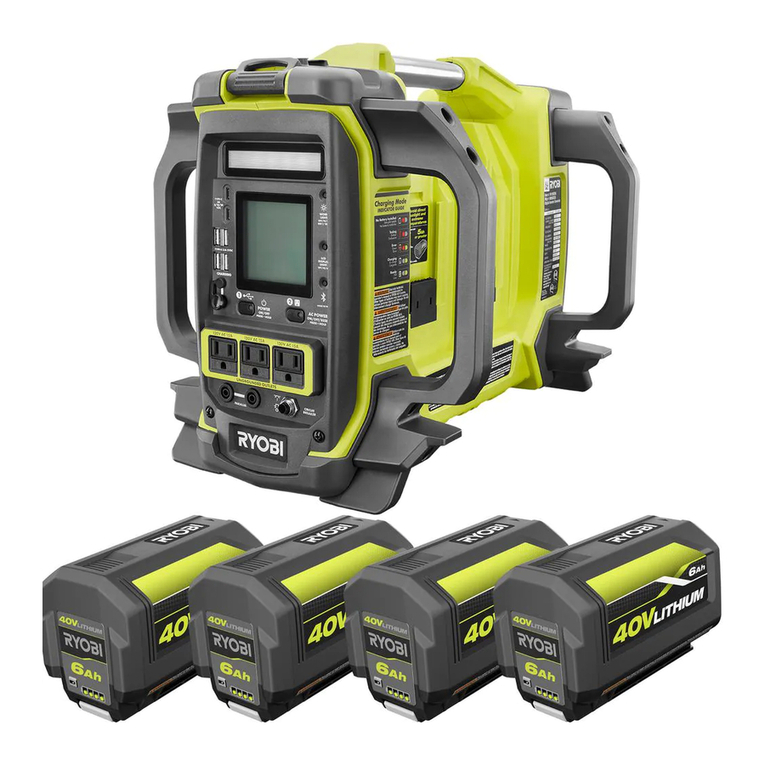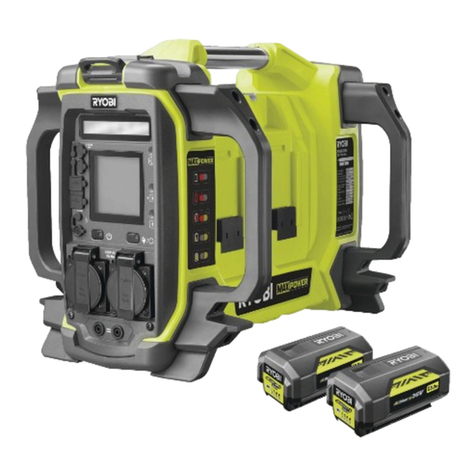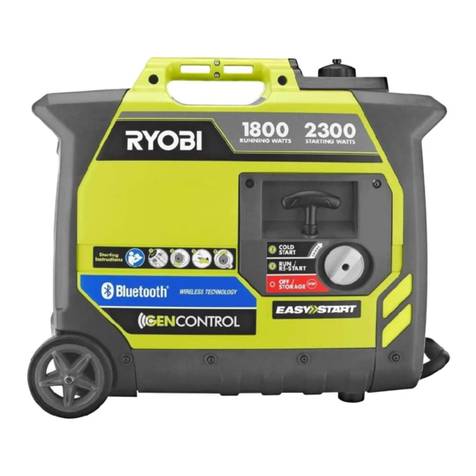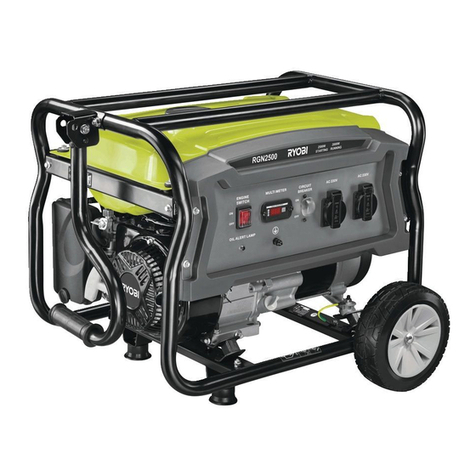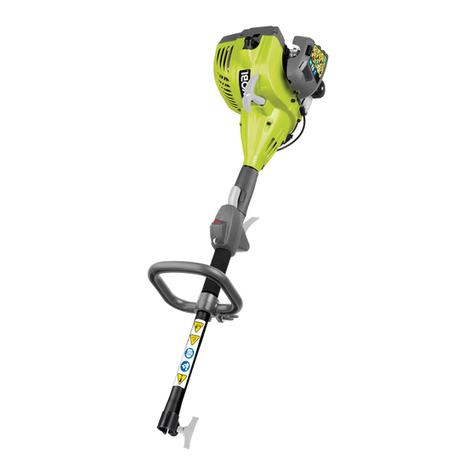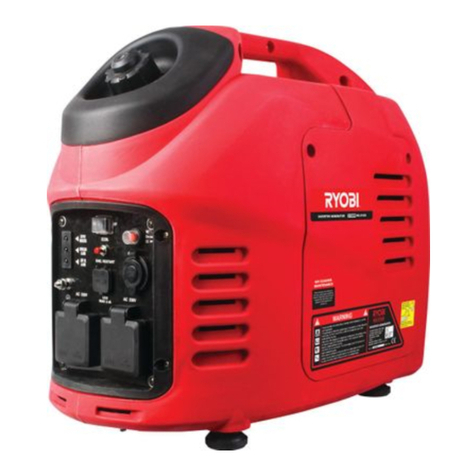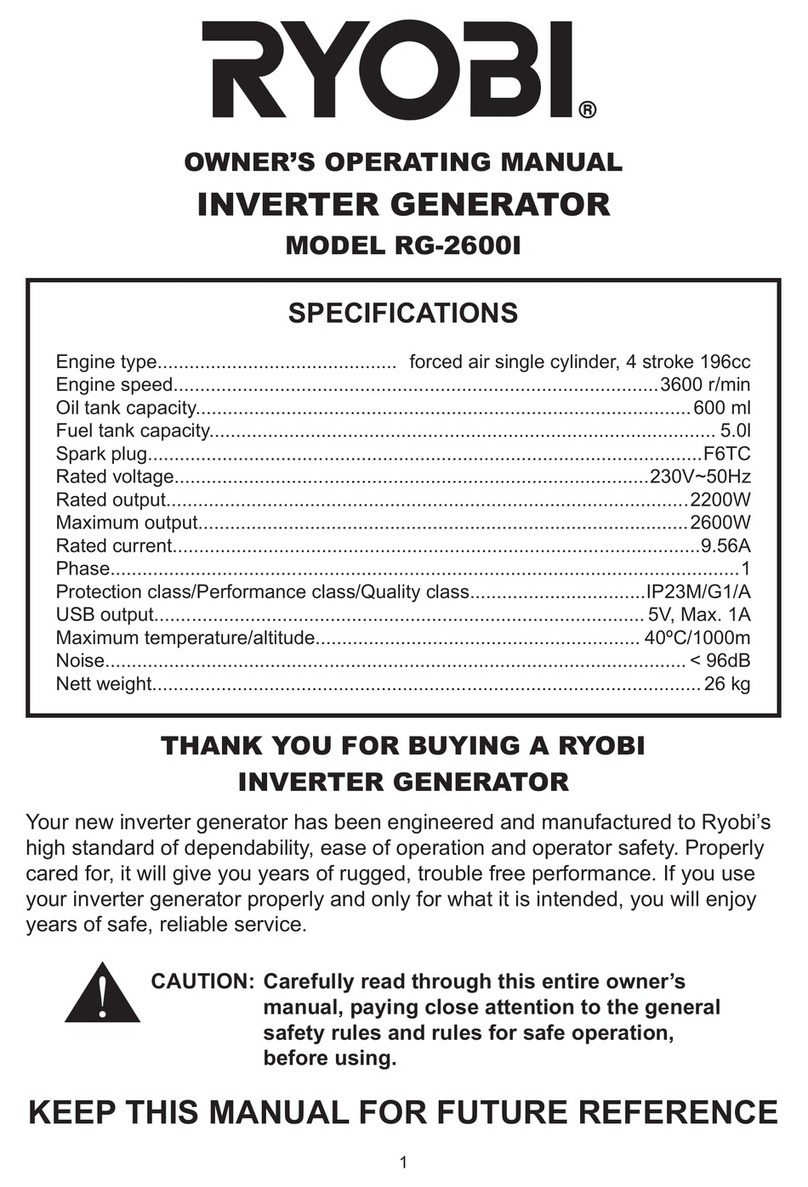
4
INTRODUCTION
This product has many features for making its use
more pleasant and enjoyable. Safety, performance, and
dependability have been given top priority in the design
of this product, making it easy to maintain and operate.
DANGER
GROUNDING THE GENERATOR (See Figure 1)
In Australia and New Zealand, grounding of portable
generators is not recommended or required. Consult
with local electricians to determine grounding
requirements before operating with a ground
connection.
IMPORTANT SAFETY INSTRUCTIONS
WARNING:
Read and understand all instructions. Failure
to follow all instructions listed below may result
in electrocution, fire, and/or carbon monoxide
poisoning, which will cause death or serious
injury.
WARNING:
Before using the ground terminal, consult a
qualified electrician to comply with the intended
use of the generator.
SAVE THESE INSTRUCTIONS
This manual contains important instructions that should
be followed during installation and maintenance of the
generator and batteries.
nDo not allow children or untrained individuals to use
this unit.
nNever start or run the engine inside a closed or partially
enclosed area. Breathing exhaust fumes will kill you.
nWear eye protection as well as hearing protection when
operating this equipment.
nKeep all bystanders, children, and pets at least 3m
away.
nWear sturdy and dry shoes or boots. Do not operate
while barefoot.
nDo not operate the generator when you are tired or
under the inuence of drugs, alcohol, or medication.
nKeep all parts of your body away from any moving parts
and all hot surfaces of the unit.
nProduct users in some states, must comply with re
prevention regulations. This product is equipped
with a spark arrestor in accordance with Australian
requirements.
nDo not touch bare wire or receptacles.
nDo not use the generator with electrical cords which
are worn, frayed, bare, or otherwise damaged.
nBefore storing, allow the engine to cool.
nDo not operate the generator in rain, snow, or wet
weather.
nEmpty fuel tank, close fuel valve, and restrain the unit
from moving before transporting in a vehicle.
nAllow engine to cool for ve minutes before refueling.
nTo reduce the risk of re and burn injury, handle fuel
with care. It is highly ammable.
nDo not smoke while handling fuel.
nStore fuel in a container approved for unleaded fuel.
nPosition the unit on level ground, stop engine, and allow
to cool before refueling.
nLoosen fuel cap slowly to release pressure and to keep
fuel from escaping around the cap.
nTighten the fuel cap securely after refueling.
nWipe spilled fuel from the unit.
nNever attempt to burn off spilled fuel under any
circumstances.
nUse only authorised replacement parts and accessories
and follow instructions in the Maintenance section of
this manual. Use of unauthorised parts or failure to
follow Maintenance instructions may create a risk of
shock or injury.
nMaintain the unit per maintenance instructions in this
Operator’s Manual.
nInspect the unit before each use for loose fasteners,
fuel leaks, etc. Replace damaged parts.
nThe generators vibrate in normal use. During and after
the use of the generator, inspect the generator as well
as extension cords and power supply cords connected
to it for damage resulting from vibration. Have damaged
items repaired or replaced as necessary. Do not use
plugs or cords that show signs of damage such as
broken or cracked insulation or damaged blades.
SPECIFIC SAFETY RULES
WARNING:
When this generator is used to supply a
building wiring system: the generator must be
installed by a qualified electrician and connected
to a transfer switch as a separately derived
system in accordance with Australian Wiring
Rules. The generator shall be connected through
a transfer switch that switches all conductors
